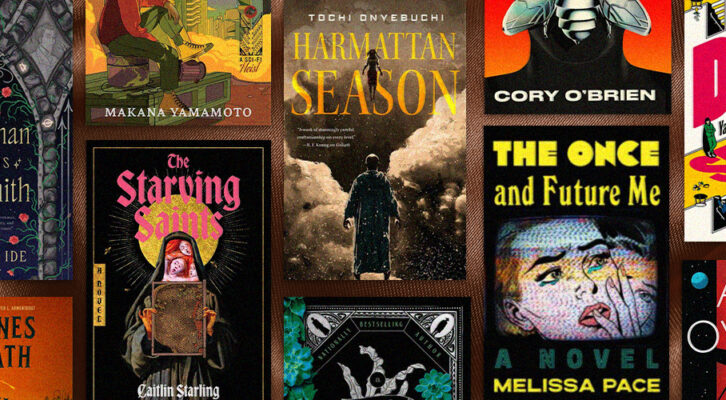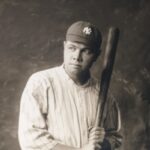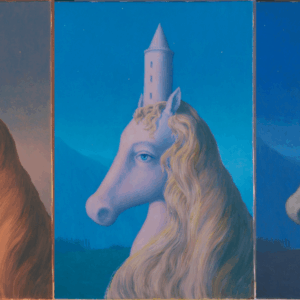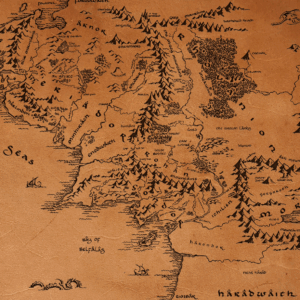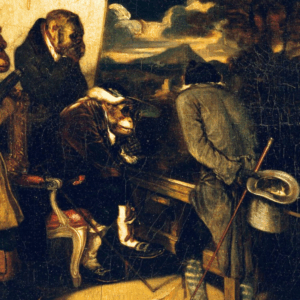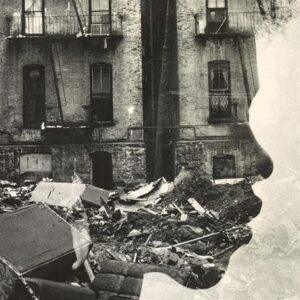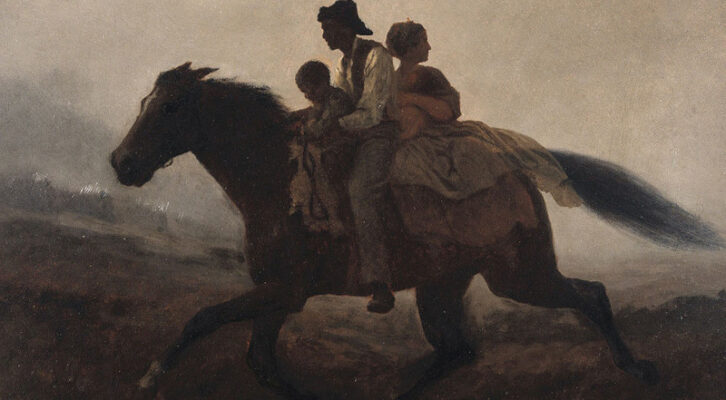
Singing For Freedom: How Those Fleeing Slavery Found New Lives in the North
Tom Zoellner on the Role of Music and Faith in the Experiences of the Formerly Enslaved
The strangeness of the experience of running away, the abrupt departure of enslavement, shocked the consciousness of those who experienced it, creating a kind of daze that animated those who built new homes around the bare chimneys of Hampton, Virginia.
The whips were gone. Extended family members saw each other for the first time in years. An unfamiliar lightness of being descended. John Quincy Adams had observed during the Amistad case sixteen years prior that “the owner of a slave is the owner of a living corpse but he is not the owner of a man.” Within the mud, squalor and sickness of the contraband camps, so too came the casting away of the former body and an emergence of a fuller kind of selfhood.
The whips were gone. Extended family members saw each other for the first time in years. An unfamiliar lightness of being descended.
Almost none of the refugees had been permitted to read or write on the plantation, and thus the precise nuance of their feelings is lost to time. What remains in the record comes filtered through the recordings of a few interlocutors, both white and Black, who noticed the “the satisfaction, the sense of security which the sight of the fortress affords” to those who had fled in the direction of the American flag.
“Once under its guns, they begin a new life and are doubtless animated with new hopes never before cherished,” wrote a sympathetic correspondent for the abolitionist-leaning New York Tribune. The freed people “comprehend that a great event has happened, which, if it has not given them their freedom and permitted them to go wherever and whenever they please, has at least placed them beyond the reach of the danger from which they have fled.”
A Unitarian minister down from Boston named Arthur Fuller spent considerable time in Slabtown, listening to funeral orations and what he called the “rude and simple eloquence” of prayer meetings amid the tents. His view is colored by the characteristic romanticism of the 19th century, but he perceived a distinct difference between the Fort Monroe contraband and the Virginia slave. He wrote in his journal: “Now we may trust they are free from oppression, and that from their limbs their chains, and from their minds and spirits the shackles, have fallen forever. To-day these are not slaves, they are men.”
The singing at the evening prayer meetings was “more demonstrative than I am accustomed to or suits my taste,” wrote the Harvard graduate, but he acknowledged it was a genuine outpouring of a spirit. Male and female voices joined at sunset to sing verses “fresh and warm from the heart”: Shout along children! Hear the dying lamb. Others sang of viewing the “promised land” from the top of Mount Pisgah, the Biblical peak from which Moses viewed the promised land. Some were improvised hymns rarely heard in the north, the kinds of coded musical messages that had been warbled for decades on Southern plantations making frequent reference to the Exodus story or of the freedom from sin promised by Jesus. In the ruins of Hampton, these verses were sung near the collapsed spires of churches where preachers had expounded on the moral correctness of slavery.
I have a home above
From sin and sorrow free
A mansion which eternal love
Designed and formed for me.
A man in the crowd from New York City insisted the quality of the music was equal to anything he had ever heard in the Broadway theater, even though the content was “generally of a devotional kind, the tunes being plaintive, and frequently imitations of well-known airs.” The singing continued well into the night in smaller groups inside tents, where lamps and candles made shadows against the canvas and people strained to make out Bible verses in the dim light.
Thomas Wentworth Higginson spent his leisure time writing down the strange new lyrics in his journal. A prolific author of abolitionist poetry before he became an army officer, his anti-slavery sermons had gotten him thrown out of his first pulpit as a Unitarian minister. Along the way, he developed a robust correspondence with the reclusive Amherst resident Emily Dickinson, whose verses he thought joyously bizarre and startling. He may have detected a similar type of rebellion against convention in the freed people’s hymns. “When I hear a new one in the evening, I run out of my tent,” he wrote in his journal. In the judgement of the Black-edited Pine and Palm newspaper, “the singing of the groups of colored people in Fortress Monroe” was “one of the most striking incidents of the war.”
One song among others, which had been banned in slavery for its pointed content, left a deep impression on those who heard it, especially those who drew near and joined their own voices in the “singing amid the ruins of the war-destroyed church in Hampton.” The missionary Lewis Lockwood thought it resembled the formal liturgy chanted at Trinity Church in New York, “heart worship with formalism.” The refugees at Fort Monroe, he said, had “a deep impression they were the second children of Israel. And many of their songs were inspired by the spirit of liberty.”
In the ruins of Hampton, these verses were sung near the collapsed spires of churches where preachers had expounded on the moral correctness of slavery.
When Israel was in Egypt’s Land,
Let my people go,
Oppressed so hard they could not stand
Let my people go.
A freed man named Carl Holloway repeated the lyrics for Lockwood, who copied them down and sent them to his old employers at the Young Men’s Christian Association in New York. By December 1861, sheet music for it had been printed and circulated. A few white churches in the north adopted it for Sunday services, though observers who had heard it in the “gentle chanted style” in the evening firelight amid the crowds at Fort Monroe said nothing else like it had been heard before. But a YMCA official named Harwood Vernon included a headnote to the lyrics explaining the hymn was not new. “It is said to have been sung for at least fifteen or twenty years, in Virginia and Maryland, and perhaps in all the Slave States, though stealthily, for fear of the lash; and is now sung openly by the fugitives who are living under the protection of our government.”
The New York Tribune reprinted the lyrics under their own titling of “The Contraband’s Freedom Hymn,” but without the music and without the aura and meaning brought to it by a live performance.
Go down to Egypt
Tell Pharoah
Thus saith my servant Moses
Let my people GO
The pointed emphasis on the last word, thought Lockwood, was “like a warning note in the ear of despotism.”
__________________________________
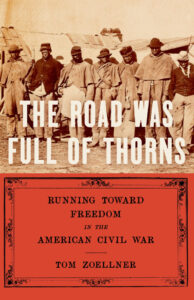
From The Road Was Full of Thorns: Running Toward Freedom in the American Civil War by Tom Zoellner. Copyright © 2025. Available from The New Press.
Tom Zoellner
Tom Zoellner is the author of nine nonfiction books, including Island on Fire: The Revolt That Ended Slavery in the British Empire, winner of the National Book Critics Circle Award for the best nonfiction book of 2020, and The Road Was Full of Thorns (The New Press). He works as a professor at Chapman University and as an editor-at-large for the Los Angeles Review of Books. He lives in Los Angeles.











